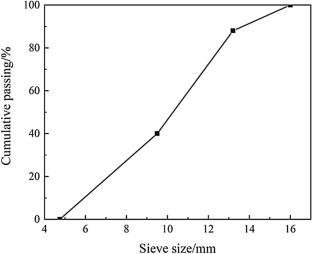Exploring the dynamic mechanical properties of self-compacting concrete with recycled asphalt pavement through FDM and DEM coupling approach
Abstract
To achieve efficient resource recycling, recycled asphalt pavement (RAP) was used to replace natural coarse aggregate (CA) in self-compacting concrete (SCC). This paper provides a comprehensive and insightful evaluation of dynamic mechanical properties of SCC with RAP. This paper used a coupled finite difference method (FDM) and discrete element model (DEM) to establish a Split Hopkinson Pressure Bar (SHPB) experiment system for analyzing the impact loading of SCC with RAP. A three-dimensional concrete specimen model was created using the PFC3D method by employing the Parallel Bond Model (PBM) and realistic-shaped crushable aggregate models. Through numerical simulation, the obtained stress waves were consistent with the stress waves from theoretical calculations. This consistency validates the SHPB model’s dynamic characteristics. The different types microcrack of SCC with various RAP contents under impact loading was revealed. Results indicate that mortar microcrack of SCC without RAP is dominant. At peak stress, as the RAP contents increase from 0 to 100%, the proportion of RAP-mortar interface microcracks increases from 0 to 61% at the lowest strain rate. At the highest strain rate, the proportion increases from 0 to 31%. Meanwhile, the proportion of microcracks within the mortar decreases from 83 to 39% and from 89 to 69%, respectively. Furthermore, the simulation results show that RAP makes the crack propagation more tortuous under impact load. These research results will be useful for a comprehensive understand the damage evolution mechanism of SCC with different RAP contents.


 求助内容:
求助内容: 应助结果提醒方式:
应助结果提醒方式:


